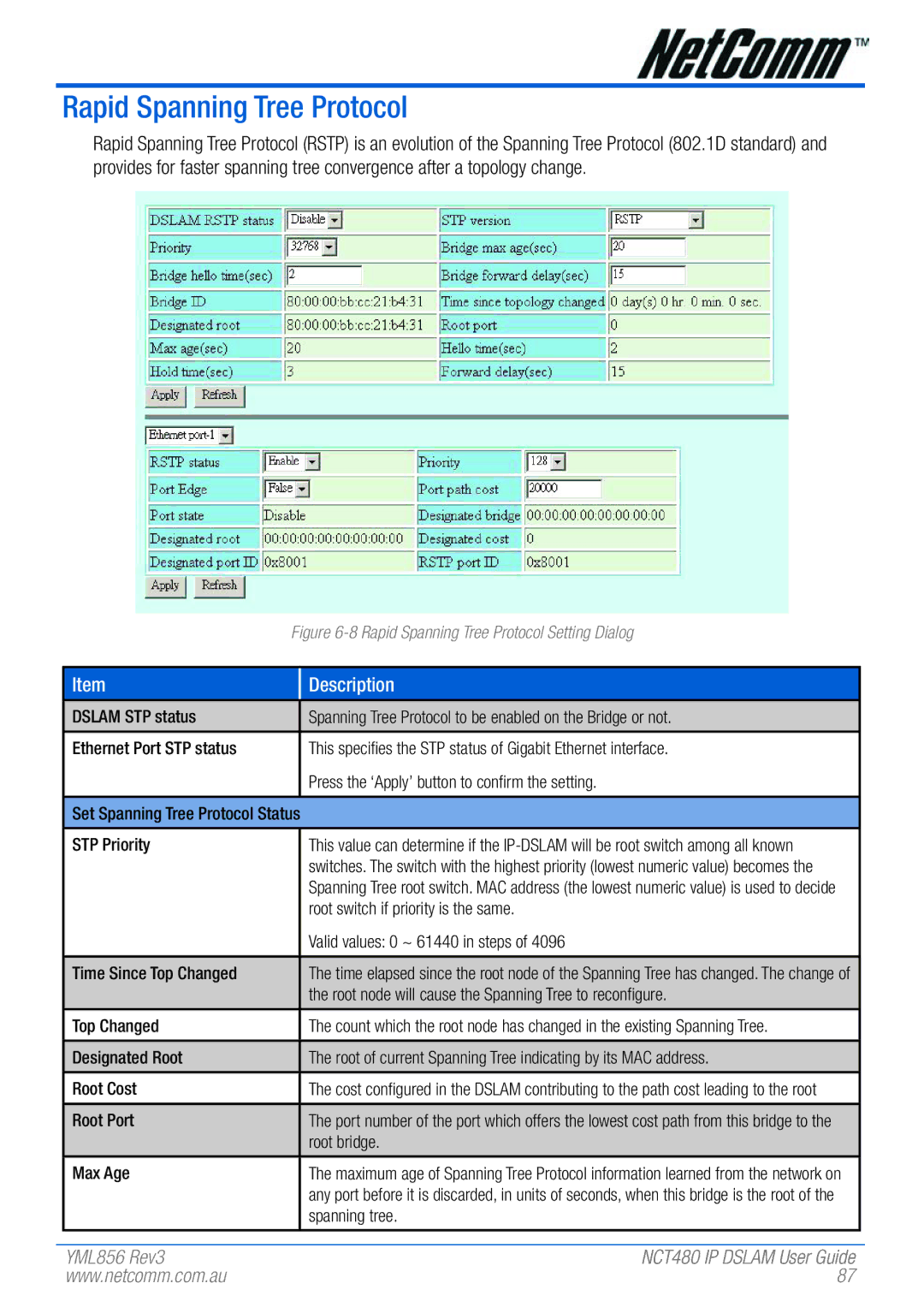
Rapid Spanning Tree Protocol
Rapid Spanning Tree Protocol (RSTP) is an evolution of the Spanning Tree Protocol (802.1D standard) and provides for faster spanning tree convergence after a topology change.
Figure 6-8 Rapid Spanning Tree Protocol Setting Dialog
Item
Description
DSLAM STP status | Spanning Tree Protocol to be enabled on the Bridge or not. |
|
|
Ethernet Port STP status | This specifies the STP status of Gigabit Ethernet interface. |
| Press the ‘Apply’ button to confirm the setting. |
|
|
Set Spanning Tree Protocol Status
STP PriorityThis value can determine if the
| Valid values: 0 ~ 61440 in steps of 4096 |
|
|
Time Since Top Changed | The time elapsed since the root node of the Spanning Tree has changed. The change of |
| the root node will cause the Spanning Tree to reconfigure. |
|
|
Top Changed | The count which the root node has changed in the existing Spanning Tree. |
|
|
Designated Root | The root of current Spanning Tree indicating by its MAC address. |
|
|
Root Cost | The cost configured in the DSLAM contributing to the path cost leading to the root |
|
|
Root Port | The port number of the port which offers the lowest cost path from this bridge to the |
| root bridge. |
|
|
Max Age | The maximum age of Spanning Tree Protocol information learned from the network on |
| any port before it is discarded, in units of seconds, when this bridge is the root of the |
| spanning tree. |
YML856 Rev3 | NCT480 IP DSLAM User Guide |
www.netcomm.com.au | 87 |
